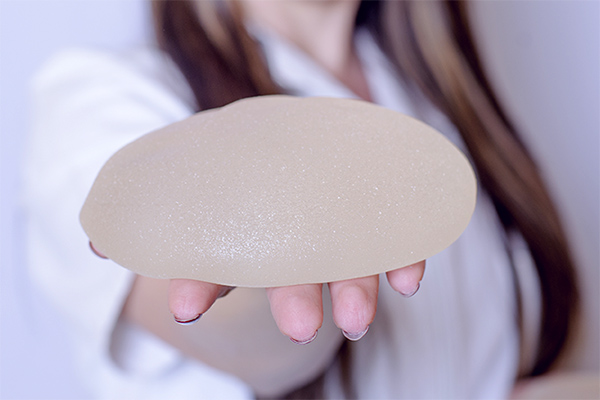Silicone Or Saline?

Women considering breast augmentations have a lot of factors to consider. One of the most important decisions that can affect the outcome of your procedure is the type of implant you’d like (silicone or saline). The primary goal of an augmentation is to increase the size and enhance the shape of your breasts. A skilled board-certified surgeon should always be able to produce exceptional results whatever option you go with.
Breast augmentations are a highly-custom procedure. There isn’t a right or wrong answer for all women. Your body type, implant placement, and your aesthetic goals can all play a role in which implant style is a good fit for you. Let’s take a look at a few pros and cons of each to help jump-start the decision-making process when it comes to silicone vs. saline.
Aesthetics
In most cases, women opt for either silicone or saline implants based on what they find aesthetically pleasing. Again, this is a completely personal choice with no cookie-cutter answer. Although many women find that silicone implants have a more natural look and feel, other women prefer the fuller, rounded look of saline implants. Before deciding on an implant type, it’s a good idea to take a look at plenty of before and after photos from all angles.
Placement
Breast implants can either be placed above the muscle or below. Your surgeon may help you with this decision based on the amount of available tissue he or she has to work with. If your surgeon thinks above muscle placement is better for you, you may want to opt for silicone implants which look great wherever they’re put. Saline implants are typically better for sub-muscular placement where they’ll be less likely to ripple.
Incision Size
A board-certified surgeon is always careful to place incisions in easily-concealable locations such as at the natural crease of your breast or around the areola. However, if scars are a big concern for you, it should be noted that saline implants can have a much smaller incision (approx 1.5”) depending on the size you’re going with. Why? Unlike saline implants that are filled after placement, silicone implants are pre-filled and require a somewhat larger incision (2”+) for accurate placement.
Risk Factors
These days, there isn’t much need to worry about potential complications with either silicone or saline implants. In the case of a rupture, saline implants will naturally re-absorb into the body. A ‘silent rupture’ is more likely to occur with silicone implants requiring removal. Regular mammogram appointments can help detect any potential problems early on.
Cost
Cost should never be a determining factor when it comes to cosmetic procedures. However, saline implants do typically come with a smaller price tag than silicone. Both saline and silicone implants often come with a 10-year warranty to offset the costs associated with a potential rupture. In addition, most surgeons will have financing options available for cosmetic procedures that aren’t covered by insurance.
Final Thoughts
Both silicone and saline implants come in a wide variety of shapes and sizes. What’s right for one woman isn’t necessarily your best option. Choosing your implant type is a decision that requires careful consideration. During your in-person consultation, your surgeon can answer all of your questions in-depth and help you through the decision-making process.





